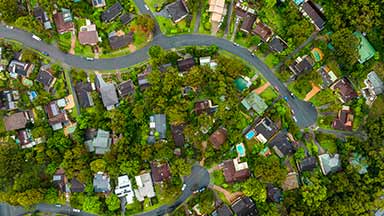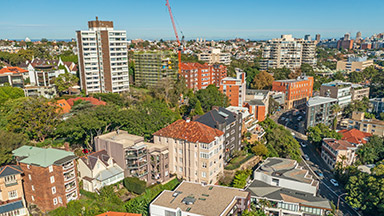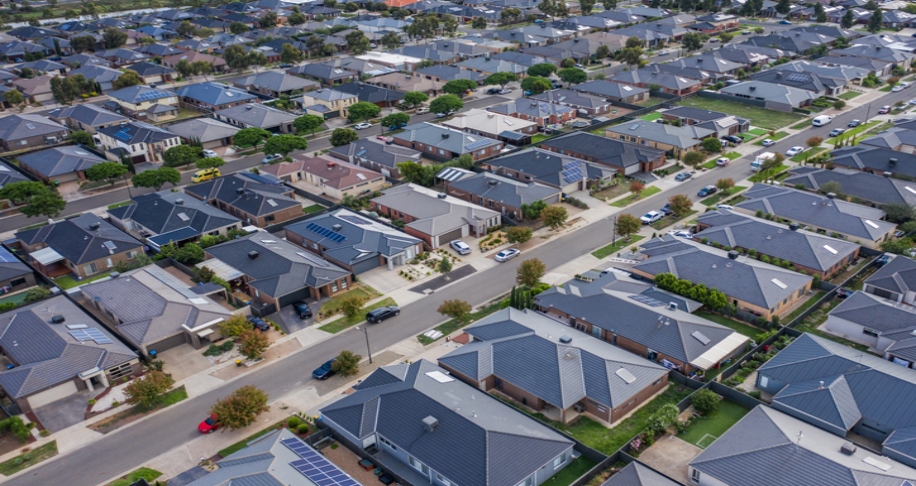
Weekly market update 26-07-2024
26 July 2024 | Blog Dr Shane Oliver discusses the risk off as tech hit continues; correction risks into August/September; global rate cutting cycle underway; Australian June quarter CPI to rise but the hurdle to another RBA rate hike should be high; and more. Read more
Oliver's insights - rise of populism and bigger government
24 July 2024 | Blog This article takes a look at the rise of populism and what it means for economic policies and investors. Read more
Weekly market update 19-07-2024
19 July 2024 | Blog This week shares are down; US election/Trump prospects starting to impact; global rates easing cycle on track; China Plenum; Australian jobs still tight but easing so RBA needs to be careful; and more. Read more
Oliver's insights - Australian shares at new record highs
17 July 2024 | Blog This article looks at the outlook for the Australian share market which has risen to new record highs above the 8000 level for the ASX 200. Read more
Econosights - interest rate expectations
16 July 2024 | Blog Why is there a difference in interest rate expectations between Australia and other major global economies? We look at this issue in this Econosights. Read more
Weekly market update 12-07-2024
12 July 2024 | Blog Disinflation resumes in the US, RBNZ pivots = positive signs for the RBA; Australian shares hit record, year end forecast revised to 8100; surge in shipping costs less threatening than 3 yrs ago; and more. Read more
Oliver's insights - five reasons why the $A is likely to rise further
10 July 2024 | Blog After a soft patch since 2021, there is good reason to expect the $A to rise into next year. Read more
Weekly market update 05-07-2024
05 July 2024 | Blog This weekly economic and market report reviews the key developments of the past week for investment markets and the outlook. Read more
Financial year end performance update - July 2024
04 July 2024 | Blog Hear from Stuart Eliot, Head of Portfolio, Stephen Flegg, Senior Portfolio Manager and My Bui, Economist at AMP Investments as they will provide an overview of the financial year end performance for June 2024, and discuss the key drivers and trends in the economy. Read more
Oliver's insights - strong investment returns
02 July 2024 | Blog There has been a wall of worry for investors over the last year but as is often the case share markets climbed it. This resulted in another financial year of strong investment returns in 2023-24. But can it continue? Read more
Weekly market update 28-06-2024
28 June 2024 | Blog Dr Shane Oliver observes strong financial year returns - but can it continue?; Trump odds up after debate - watch trade war risks; risk of another RBA hike up but not fait accompli; Australian jobs market cooling; another big Australian budget surplus and more. Read more
Oliver's insights - investing 40 years
25 June 2024 | Blog Dr Shane Oliver shaes his nine most important lessons from investing over the past 40 years. Read more
Weekly market update 21-06-2024
21 June 2024 | Blog This week, narrowing US share gains; drip feed of falling global inflation & rates is good sign for RBA; Federal & state governments making the RBA's job harder; the pros & cons of nuclear; and more. Read more
Econosights - trade war risks with a Trump 2.0 presidency
20 June 2024 | Blog We recently wrote about the issues surrounding the US election. In this Econosights we look specifically at Trump’s trade policies, which may result in significant downside risk to sharemarkets, in the event of a Trump 2.0 Presidency in 2025. Read more
Oliver's insights - French elections and the Eurozone
19 June 2024 | Blog This edition of Oliver's insights looks at the fallout from the recent European Union parliamentary elections and the calling of parliamentary elections in France. Read more
Weekly market update 14-06-2024
14 June 2024 | Blog US shares up on better inflation data, Eurozone shares down after Parliamentary Elections and France election uncertainty, Australian shares still under-performing and more. Read more
Weekly market update 07-06-2024
07 June 2024 | Blog Shares up/bond yields down as central banks cut rates; Australian GDP close to stalling & wages growth slowing lean dovish on RBA rates; Fed to hold but still signal easing Read more
Oliver's insights - australian home prices up again
04 June 2024 | Blog We expect home prices to rise around 5% this year as the supply shortfall continues to dominate, but the pushing out of rate cuts and the possibility of rate hikes along with the rising trend in unemployment pose a key downside risk. Read more
Weekly market update 31-05-2024
31 May 2024 | Blog This week shares are under pressure again from higher bond yields; markets likely to increasingly focus on US election; the next RBA move is still likely to be a cut; watch FWC wage decision; and more. Read more
Econosights - intergenerational wealth
29 May 2024 | Blog The angst around generational wealth inequality in Australia reflects significant asset price appreciation in older household groups (mostly Baby Boomers) while growth in wealth for younger households like Millennials has been lower. Read more
Oliver's Insights - US election
28 May 2024 | Blog The US presidential election – implications for investors and Australia Read more
Econosights - An update on global inflation
27 May 2024 | Blog Stronger global growth (as well as other factors like geopolitical concerns) are lifting commodity prices, which is causing renewed concern about the inflation outlook and leading to financial markets pushing back expectations for rate cuts. In this Econosights we look at the impact of stronger global growth on the trajectory for inflation. Read more
Weekly market update 24-05-2024
24 May 2024 | Blog The ride for shares is likely to remain volatile and constrained, what is the rally in gold and metal prices telling us, lots of noise but global inflation is still falling, the next move in rates likely remains down, inflation expectations fall further. Read more
Oliver's Insights - RBA and rates
21 May 2024 | Blog This year has seen a bit of a rollercoaster ride in interest rates expectations. This article looks at the outlook for the RBA’s cash rate. Read more
Weekly market update 17-05-2024
17 May 2024 | Blog Better news on inflation and signs of a “good” moderation in US economic growth; 2024-25 Australian Federal Budget Read more
Federal budget & global markets update 2024
15 May 2024 | Blog In this webinar recording hear from AMP Chief Economist & Head of Investment Strategy, Dr Shane Oliver explain what effects the Federal Budget could have on the Australian economy and investment markets. Read more
Key points from the 2024-25 Federal Budget
15 May 2024 | Super Here's a 5-minute read on how the 2024-25 Federal Budget proposals could affect you. Read more
Economic implications Fed Budget 2024-25
14 May 2024 | Super Read about the economic and investment market implications of the 2024-25 Federal Budget announcements. Read more
Weekly market update 10-05-2024
10 May 2024 | Blog Fed less hawkish than feared; RBA holds; Aust consumer remains weak; slowing in CPI inflation, Aust budget preview. Read more
Oliver's Insights - seasonal patterns in shares
06 May 2024 | Blog This article looks at seasonal patterns in shares and whether its time to “sell in May and go away” along the lines of the old share market saying. Read moreSubscribe to our newsletter
What you need to know
The credit provider for all banking products is AMP Bank Limited ABN 15 081 596 009, AFSL and Australian Credit Licence 234517. Approval is subject to AMP Bank guidelines. Terms and conditions apply and are available at amp.com.au/bankterms or by calling 13 30 30. Fees and charges are payable.
Any advice and information is provided by AWM Services Pty Ltd ABN 15 139 353 496, AFSL No. 366121 (AWM Services) and is general in nature. It hasn’t taken your financial or personal circumstances into account.
It’s important to consider your particular circumstances and read the relevant product disclosure statement, Target Market Determination or terms and conditions, available from AMP at amp.com.au, or by calling 131 267, before deciding what’s right for you.
You can read our Financial Services Guide online for information about our services, including the fees and other benefits that AMP companies and their representatives may receive in relation to products and services provided to you. You can also ask us for a hardcopy.
All information on this website is subject to change without notice. AWM Services is part of the AMP group.